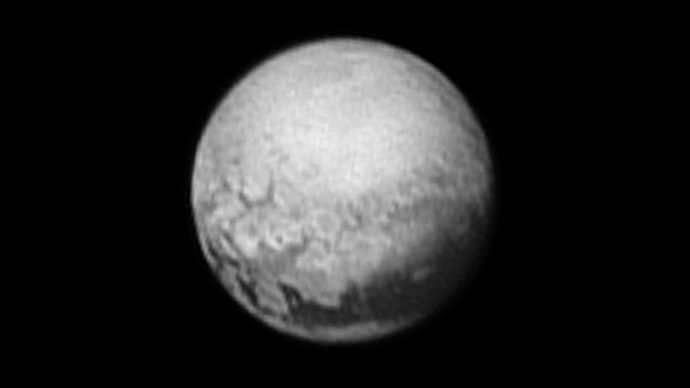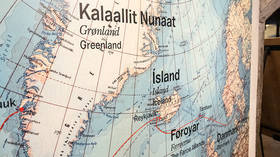Pluto geology detailed in new NASA images

The latest batch of pictures received from NASA’s New Horizons spacecraft have revealed details about the geology of Pluto, as well as having showcased a more detailed view of Charon, the largest of the dwarf planet’s five known moons.
“We’re close enough now that we’re just starting to see Pluto’s geology,” said New Horizons program scientist Curt Niebur.
The new set of pictures transmitted from 3.3 million miles (5.4 million kilometers) away from our planet reveal distinct surface features. One snapshot shows a large dark band known as the “whale.”

The black and white image captured the side of Pluto that always faces its largest moon called Charon. It shows both the “tail” of the dark whale-shaped geological feature along its equator, and a gray area which Niebur explained, is a “unique” transition region with “dynamic processes interacting.”
“Among the structures tentatively identified in this new image are what appear to be polygonal features; a complex band of terrain stretching east-northeast across the planet, approximately 1,000 miles long; and a complex region where bright terrains meet the dark terrains of the whale,” said New Horizons principal investigator Alan Stern.
READ MORE: Pluto will steal your heart: NASA exposes 'most detailed' image ever
“After nine and a half years in flight, Pluto is well worth the wait,” he added.

The much anticipated July 14 Pluto flyby will witness NASA’s space probe New Horizons speeding by the dwarf planet at 31,000 mph.
In order to record to the second-most massive known dwarf planet, after the scattered-disc object Eris, NASA's space probe traveled more than 3.6 billion miles, only to stay for a few hours so that us, on Earth, can look at Pluto in a new way.
Since its launch in 2006, the New Horizon spacecraft has been snapping images of Pluto as it gets closer and closer to the planet.












